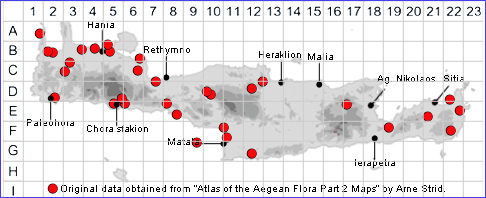
SPECIES DESCRIPTION
PICRIS RHAGADIOLOIDES
Family and Genus:- See- COMPOSITAE/Sect. PICRIS
Common Names:- None
Homotypic Synonyms:- Choeroseris rhagadioloides, Crepis rhagadioloides.
Meaning:- Picris (Gr) Bitter. A name used by the Greek philosopher Theophrastus
for a bitter
Rhagadioloides (L) Divided. (the inner achenes falling early but the
outer elongate and persist).
General description:- Annual.
Stems:-
1) 10-50 cm, with numerous unequal, rigid hairs.
Leaves:-
1) Basal, 40-90 × 6-20 mm, mostly oblanceolate, entire to sinuate-dentate,
narrowed into the petiole.
2) Lower cauline, similar to the basal, semiamplexicaul,
3) Upper, smaller, narrower and often entire.
Flowers:-
1) Capitula, numerous.
2) Peduncles, often short, not thickened after anthesis.
3) Involucre, 8-12 × 6-9 mm.
4) Bracts, linear-lanceolate, acute, with dense rigid hairs,
a) outer, up to half as long as the inner.
Fruit:-
1) Achenes 2·5-3 mm, dark brown, more or less curved, strongly transversely
muricate, without a beak.
Key features:-
1) Achenes 2·5-3 mm, dark brown, more or less curved, strongly transversely
muricate, without a beak.
2) Peduncles, often short, not thickened after anthesis.
Habitat:- Fallow fields, olive groves, vineyards, dry grassland, coastal habitats. 0-
600 (-1000) m.
Distribution:- Scattered throughout Greece. - Mediterranean region, mostly in the
east, extending to S Anatolia, Cyprus and Egypt. Somewhat limited distribution
across Crete, lacking in the central region.
Flowering time:- May-July, occasionally later in wet places.
Photos by:- Zacharias Angourakis
